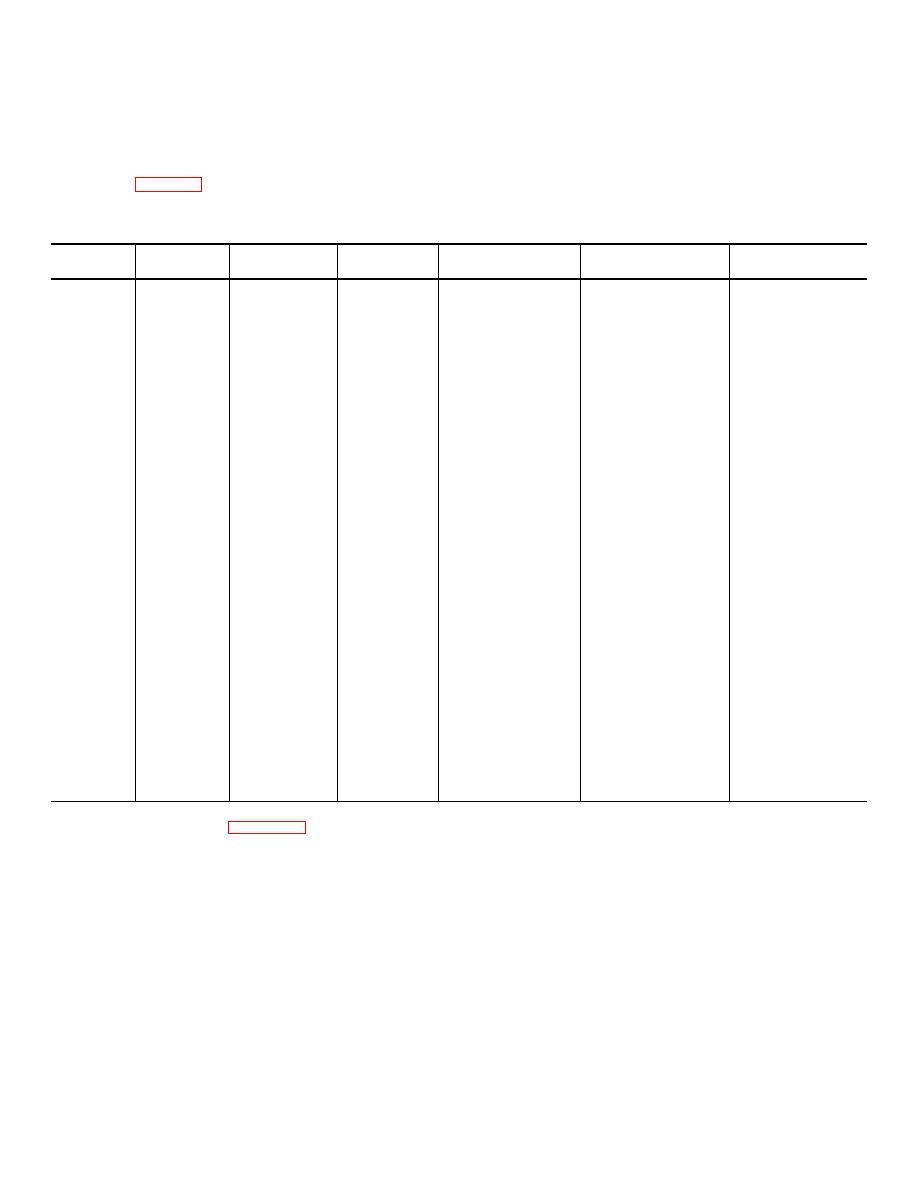
*TM 5-813-1/AFM-88-10, Vol. 1
5-3. Types of Wells
Wells are constructed by a variety of methods. There is
no single optimum method; the choice depends on size,
depth, formations encountered and experience of local
well contractors. The most common types of wells are
compared in table 5-1.
Table 5-1. Types of Wells.
Maximum
Lining or
Method of
Type
Diameter
Depth (ft)
Casing
Suitability
Disadvantages
Construction
Dug
3 to 20
40
wood, ma-
Water near sur-
Large number of
Excavation from
feet
sonry, con-
face. May be con-
manhours required
within well.
crete or
structed with
for construction.
metal
hand tools.
Hazard to diggers.
Driven
2 to 4
50
pipe
Simple using
Formations must be
Hammering a pipe
inches
hand tools.
soft and boulder
into the ground.
free.
Jetted
3 or 4
200
pipe
Small dia. wells
Only possible in
High pressure
inches
on sand.
loose sand forma-
water pumped
tions.
through drill pipe.
Bored
up to 36
50
pipe
Useful in clay
Difficult on loose
Rotating earth au-
inches
formations.
sand or cobbles.
ger bracket.
Collector
15 feet
130
Reinforced
Used adjacent to
Limited number of
Caisson is sunk
concrete
surface recharge
Installation Con-
into aquifer. Pre-
caisson
source such as
tractors
formed radial
river, lake or
pipes are jacked
ocean.
horizontally
through ports
near bottom.
Drilled
Up to 60
4000
pipe
Suitable for vari-
Requires experi-
a. Hydraulic ro-
inches
ety of forma-
enced Contractor &
tary*
tions.
specialized tools.
b. Cable tool per-
cussion*
c. reverse circula-
tion rotary
d. hydraulic-per-
cussion
e. air rotary
*For detailed description, see Appendix C.
5-3



 Previous Page
Previous Page
